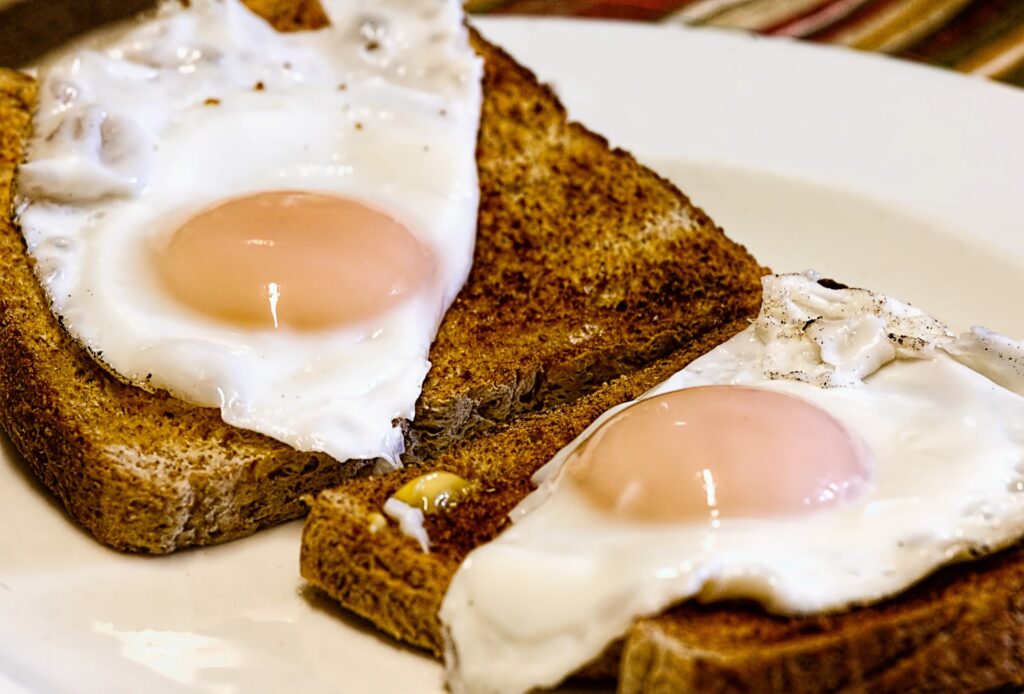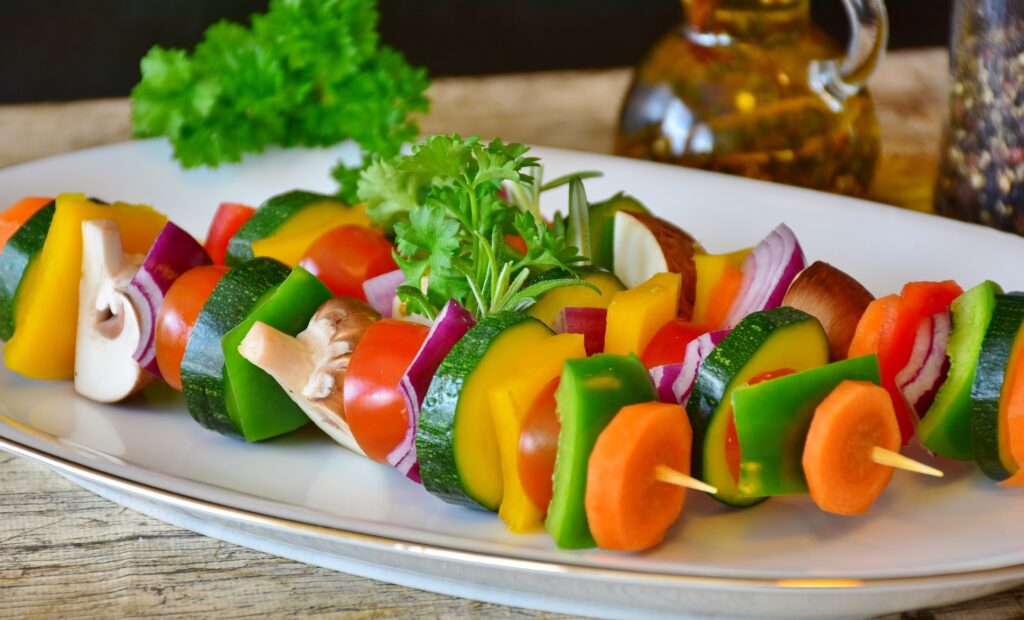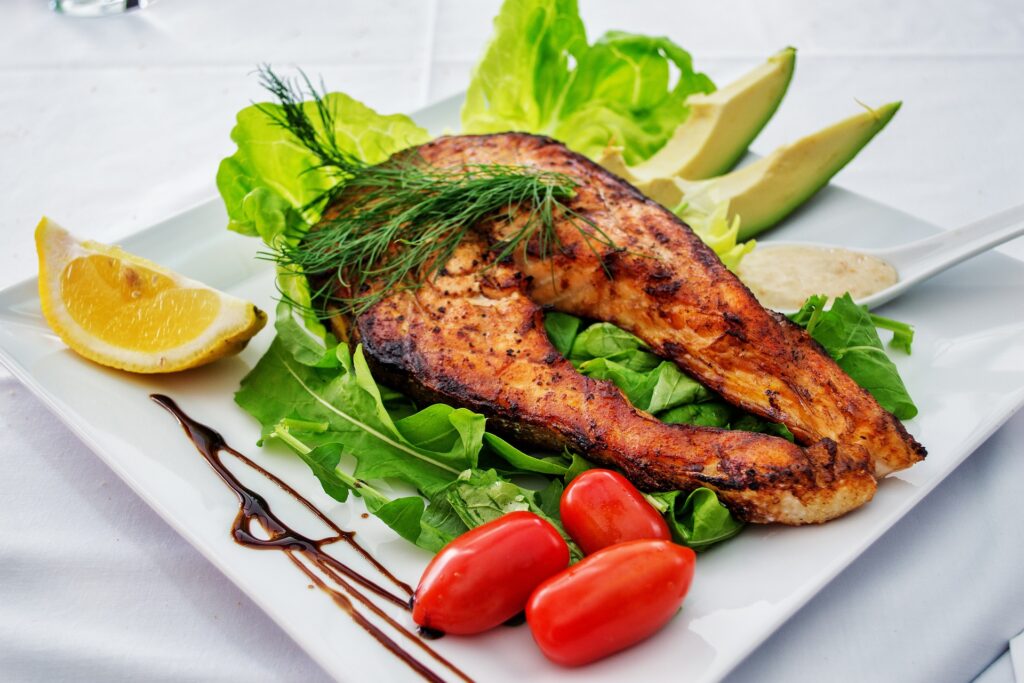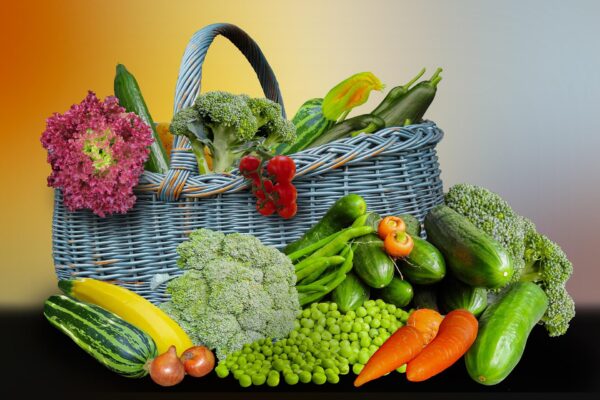Amazing Weight Loss Method. 16/8 Intermittent Fasting, 7-Day Meal Plan.

Ready to embark on a fasting journey that promotes fat burning, boosts energy, and enhances your overall well-being? It is time to dive into the world of 16/8 intermittent fasting and its delicious meal plan.
Intermittent fasting might just be the answer you have been seeking.
Among the various intermittent fasting methods, the 16/8 approach has gained significant popularity for its simplicity and effectiveness. By fasting for 16 hours and confining your eating to an 8-hour window each day, this method offers a practical way to reap the benefits of intermittent fasting.
This article will guide you through a comprehensive 7-day meal plan specifically designed for the 16/8 intermittent fasting method.
Get ready to embark on a journey towards a healthier lifestyle while enjoying delicious and nutritious meals.
Benefits of Intermittent Fasting
Intermittent fasting offers a range of benefits that go beyond weight loss.
One of the key advantages is its ability to improve insulin sensitivity, which helps regulate blood sugar levels and reduce the risk of type 2 diabetes. By giving the body regular breaks from food, intermittent fasting promotes fat-burning and weight loss by creating a calorie deficit.
It also enhances cellular repair processes through a mechanism called autophagy, where old and damaged cells are recycled and replaced with new ones, potentially slowing down the ageing process.
Emergence of Fasting
In the world of intermittent fasting, the 16/8 method has emerged as one of the most popular approaches.
This fasting method, also known as time-restricted eating, involves dividing the day into a fasting period of 16 hours and an eating window of 8 hours.
During fasting, only calorie-free beverages such as water, herbal tea, and black coffee are allowed, while meals are consumed within the designated eating window.
Gaining Status Worldwide
The 16/8 intermittent fasting method has gained significant popularity due to its simplicity, flexibility, and potential health benefits.
The 16/8 intermittent fasting method has witnessed a surge in popularity in recent years, capturing the attention of health enthusiasts, fitness enthusiasts, and individuals seeking effective ways to manage their weight and improve their overall well-being. (1)
The 16/8 method offers a straightforward and easy-to-follow approach to fasting.
With a designated 8-hour eating window, individuals can customize their fasting and eating periods according to their lifestyles and preferences.
This flexibility makes it more feasible for people to incorporate intermittent fasting into their daily routines.
7-Day Meal Plan
So, without investing much time, let’s move directly towards the subject of the “7-DAY MEAL PLAN”. Here you will get a full fledge diet plan for a week.
That would assist you to the deep down the bottom in your weight loss and healthy life.
Day 1: Monday – Establishing a Balanced Foundation
A. Breakfast:
To kickstart your week on a healthy note and establish a balanced foundation, focus on incorporating protein-rich options, whole grains, and fruits into your breakfast (2).
Healthy protein-rich options:
Include a good source of protein to provide sustained energy and keep you feeling full throughout the morning. Some options to consider include:

Greek yogurt: Opt for plain or low-fat Greek yogurt, which is rich in protein and probiotics.
Eggs: Enjoy them boiled, scrambled, or as an omelette for a protein-packed breakfast.
Incorporating whole grains and fruits:
Whole grain bread or toast: Choose whole wheat, rye, or multigrain bread to increase fiber content.
Oatmeal: Start your day with a warm bowl of oatmeal topped with fresh fruits for added flavor and nutrition.
Fresh fruits: Incorporate a variety of fruits such as berries, sliced bananas, or diced apples for natural sweetness and additional nutrients.
B. Lunch:
Nutrient-dense vegetables and lean protein:
Salad: Create a vibrant salad using a mix of leafy greens (spinach, kale, or romaine lettuce) and colorful vegetables like bell peppers, cucumbers, cherry tomatoes, and carrots.
For protein, top it off with grilled chicken breast, tofu, or chickpeas.
Stir-fry: Prepare a stir-fry using an array of vegetables such as broccoli, mushrooms, snow peas, and bell peppers
Healthy fat sources for satiety:
Nuts and seeds: Sprinkle a handful of almonds, walnuts, or chia seeds onto your salad or include them as a side snack for a dose of healthy fats and added crunch (3).
Olive oil or tahini dressing: Drizzle your salad or stir-fry with a homemade dressing made from extra virgin olive oil or tahini, which are rich in beneficial fats.
Day 2: Tuesday – Nourishing the Body
A. Breakfast:
Start your Tuesday with a nourishing breakfast that provides sustained energy throughout the morning.
High-fiber options for sustained energy:
Choose breakfast options that are rich in fiber to promote satiety and support digestion. Consider the following:
Overnight oats: Prepare a delicious bowl of overnight oats using rolled oats, chia seeds, almond milk, and your choice of toppings like berries, nuts, and a drizzle of honey.
Including healthy fats and moderate protein:
Avocado and egg toast: Top your whole grain toast with mashed avocado and a poached or scrambled egg for a satisfying combination of healthy fats and protein.
Greek yogurt with nuts and seeds: Enjoy a serving of Greek yogurt topped with a handful of mixed nuts, seeds (such as flax or chia), and a drizzle of honey for added sweetness.
B. Lunch:
Vegetarian or vegan options:
Explore delicious plant-based lunch choices that provide a range of nutrients and flavors. Consider the following:
Quinoa and vegetable salad: Prepare a colorful salad using cooked quinoa, mixed greens, diced vegetables (such as bell peppers, cucumbers, and cherry tomatoes), and a homemade vinaigrette dressing.
Emphasize plant-based protein sources:
Chickpea salad: Make a delicious salad with chickpeas, chopped vegetables, fresh herbs, and a lemon-tahini dressing.

Tofu stir-fry: Sauté tofu with a medley of colorful vegetables and flavor it with low-sodium sauces like soy sauce or tamari.
C. Dinner:
Grilled chicken or fish with roasted vegetables: Season chicken breast or fish fillets with herbs and spices, then grill or bake them. Serve alongside roasted vegetables like Brussels sprouts, sweet potatoes, or asparagus.
Stir-fried lean beef with mixed veggies: Sauté lean beef strips with a variety of colorful vegetables like broccoli, bell peppers, snap peas, and carrots. Use minimal oil and low-sodium sauces for seasoning.
Avoid heavy sauces and excessive salt:
Fresh herbs and citrus: Use a combination of fresh herbs like basil, cilantro, or parsley, along with a squeeze of lemon or lime juice, to add brightness to your dishes.
Homemade marinades: Create your marinades using ingredients like.
Day 3: Wednesday – Boosting Antioxidant Intake
A. Breakfast:
Antioxidant-rich fruits and berries:
Mixed berry smoothie: Blend a combination of berries like blueberries, strawberries, and raspberries with a base of almond milk or Greek yogurt for a refreshing and antioxidant-packed breakfast.
Acai bowl: Enjoy an acai bowl topped with sliced bananas, granola, and a sprinkle of chia seeds. Acai berries are known for their high antioxidant content.
B. Lunch:
Adding lean protein and healthy dressings:
Grilled chicken or tofu: Add grilled chicken breast or tofu cubes for a protein boost.
Lemon-tahini dressing: Prepare a tangy dressing using fresh lemon juice, tahini, garlic, and a touch of honey or maple syrup.
C. Dinner:
Focus on antioxidant-rich vegetables and herbs:
Roasted rainbow vegetables: Roast a variety of colorful vegetables like bell peppers, eggplants, cherry tomatoes, and carrots. Season with herbs like rosemary or thyme.
Stir-fried broccoli and kale: Sauté broccoli florets and kale leave with garlic, ginger, and a splash of low-sodium soy sauce.
Include lean protein sources such as fish or poultry:
Grilled salmon: Season salmon fillets with herbs and grill them to perfection. Serve alongside your antioxidant-rich vegetables.
Baked chicken breast: Bake chicken breast seasoned with herbs and spices like turmeric, and cumin.
Day 4: Thursday – Hydration and Detoxification
A. Breakfast:
Hydrating options like infused water or herbal tea:
Lemon-infused water: Squeeze fresh lemon juice into a glass of water and add a few slices of lemon for a refreshing and hydrating start to your morning.
Herbal tea: Choose herbal teas like green tea, peppermint tea, or dandelion tea, which can help support hydration and detoxification.
Fiber-rich fruits or vegetables:
Green smoothie: Blend a combination of leafy greens (such as spinach or kale), cucumber, celery, and fiber-rich fruit like pear or apple. Add water or coconut water for a hydrating base.
Vegetable omelette: Prepare an omelette with a variety of chopped vegetables like bell peppers, onions, and spinach. Serve it with a side of sliced tomatoes or avocado.
B. Lunch:
Include diuretic foods like cucumber or watermelon:
Cucumber and mint-infused water: Slice the cucumber and add it to a pitcher of water with fresh mint leaves. Let it infuse for a few hours and enjoy it throughout your lunch.
Watermelon and feta salad: Combine watermelon cubes, crumbled feta cheese, and fresh mint leaves for a light and hydrating salad that also acts as a diuretic.
C. Dinner:
Light and refreshing meals with plenty of fluids:
Choose dinner options that are light, hydrating, and include plenty of fluids. Consider the following ideas:
Chilled cucumber soup: Blend cucumbers, Greek yogurt, fresh herbs, and a touch of lemon juice to create a refreshing and hydrating soup. Serve it chilled.
Incorporate detoxifying ingredients like cruciferous vegetables:
Stir-fried broccoli and cauliflower: Sauté broccoli florets, cauliflower florets, and thinly sliced carrots with garlic, ginger, and a splash of low-sodium soy sauce (4).

Steamed kale with lemon: Steam kale leaves and squeeze fresh lemon juice over them before serving. Kale is known for its detoxifying properties.
Day 5: Friday – Mindful Eating for Emotional Well-
being
A. Breakfast:
Start your Friday with a breakfast that includes mood-boosting foods and creates a balanced meal to prevent overeating later in the day.
Include mood-boosting foods like dark chocolate or nuts:
Dark chocolate and berries: Enjoy a small piece of dark chocolate with a handful of fresh berries. Dark chocolate contains compounds that can enhance mood, and berries are rich in antioxidants.
Nut butter and banana toast: Spread your favorite nut butter on whole-grain toast and top it with sliced bananas. Nuts contain healthy fats that support brain health and mood regulation.
Balanced meals to prevent overeating later:
Scrambled eggs with vegetables: Cook scrambled eggs and incorporate a variety of colourful vegetables like spinach, bell peppers, and mushrooms. Serve with a side of whole-grain toast.
Greek yogurt parfait: Layer Greek yogurt, mixed nuts, and a variety of fruits like sliced strawberries, blueberries, or diced peaches for a protein-rich and balanced breakfast.
B. Lunch:
Mindful eating practices like slow chewing and savouring flavors:
Engage in mindful eating by being fully present during your meal and paying attention to your eating experience. Try the following practices:
Chew slowly: Take your time to chew each bite thoroughly, savoring the flavors and textures of the food.
C. Dinner:
Avoid emotional eating triggers and mindless snacking:
Create a relaxing environment: Set a calm and peaceful ambience during your dinner by dimming the lights, playing soothing music, or lighting candles.
Practice portion control: Serve yourself reasonable portion sizes and avoid eating straight from packages to prevent mindless overeating.
Choose satisfying and nutritious options to prevent cravings:
Grilled salmon with roasted vegetables: Grill a salmon fillet and serve it alongside roasted vegetables like broccoli, carrots, and Brussels sprouts.
Day 6: Saturday – Supporting Physical Activity
A. Breakfast:
Fuel your body for physical activity with a breakfast that provides energy and includes protein and complex carbohydrates.
Energizing foods for pre-workout nutrition:
Overnight oats: Soak rolled oats in your choice of milk (dairy or plant-based) overnight. In the morning, top with sliced fruits, nuts, and a drizzle of honey or maple syrup.
Whole-grain toast with nut butter and banana: Spread your favorite nut butter on whole-grain toast and top it with sliced bananas for a combination of complex carbohydrates, protein, and potassium.
Include protein and complex carbohydrates:
Scrambled eggs with whole-grain toast: Cook scrambled eggs and serve them with a side of whole-grain toast. Add vegetables like spinach, mushrooms, or peppers for extra nutrients.
Greek yogurt with granola and berries: Enjoy a bowl of Greek yogurt topped with granola and a handful of fresh berries. Greek yogurt is a great source of protein, and granola provides complex carbohydrates.
B. Lunch:
Include foods rich in electrolytes:
Coconut water: Enjoy a refreshing glass of coconut water, which naturally contains electrolytes like potassium and magnesium.
Electrolyte-rich salad: Create a salad using leafy greens, sliced cucumbers, cherry tomatoes, and a sprinkle of sea salt. These ingredients provide electrolytes naturally.
C. Dinner:
A balanced meal with lean protein, complex carbs, and vegetables:
Grilled chicken or fish with quinoa and roasted vegetables: Grill a lean protein source like chicken breast or fish and serve it with cooked quinoa and a side of roasted vegetables such as asparagus, zucchini, and sweet potatoes.
Lentil or chickpea curry with brown rice: Prepare a flavorful curry using lentils or chickpeas and serve it over brown rice. Add a side of steamed vegetables or a salad for extra nutrients.
Day 7: Sunday – Meal Prepping and Planning Ahead
A. Breakfast:
Simplify your mornings with easy meal prep ideas that can be prepared ahead of time, saving you time during busy weekdays.
Easy meal prep ideas for busy mornings:
Overnight chia pudding: Mix chia seeds with your choice of milk (dairy or plant-based) and a sweetener of your choice (such as honey or maple syrup). Let it sit in the refrigerator overnight and top it with fresh fruits or nuts in the morning.
Make-ahead breakfast burritos: Prepare breakfast burritos by filling tortillas with scrambled eggs, sautéed vegetables, and a sprinkle of cheese (5). Wrap them individually and store them in the freezer. In the morning, simply heat them in the microwave or oven.
B. Lunch:
Batch-cooking for the week:
Quinoa or grain bowls: Cook a batch of quinoa or your preferred grain and portion it into individual containers. Add a variety of cooked vegetables, proteins (such as grilled chicken or chickpeas), and dressings or sauces. You can also include toppings like nuts or seeds for added texture and flavor.
Soup or stew: Prepare a big pot of soup or stew with a combination of vegetables, legumes, and proteins. Divide it into individual containers and refrigerate or freeze for later consumption.
C. Dinner:
Prepare meals that can be repurposed for later in the week:
Roasted chicken or vegetables: Roast a whole chicken or a variety of vegetables (such as sweet potatoes, Brussels sprouts, and cauliflower). Use the leftovers to create salads, wraps, and sandwiches.
Wrap Up
In conclusion, it is advisable to follow the plan according to the adaption capacity of your body.
This is all about a 7-day meal plan of intermittent fasting.
It is a promising strategy for losing weight with the help of intermittent fasting and the best diet plan for the fasting period.



